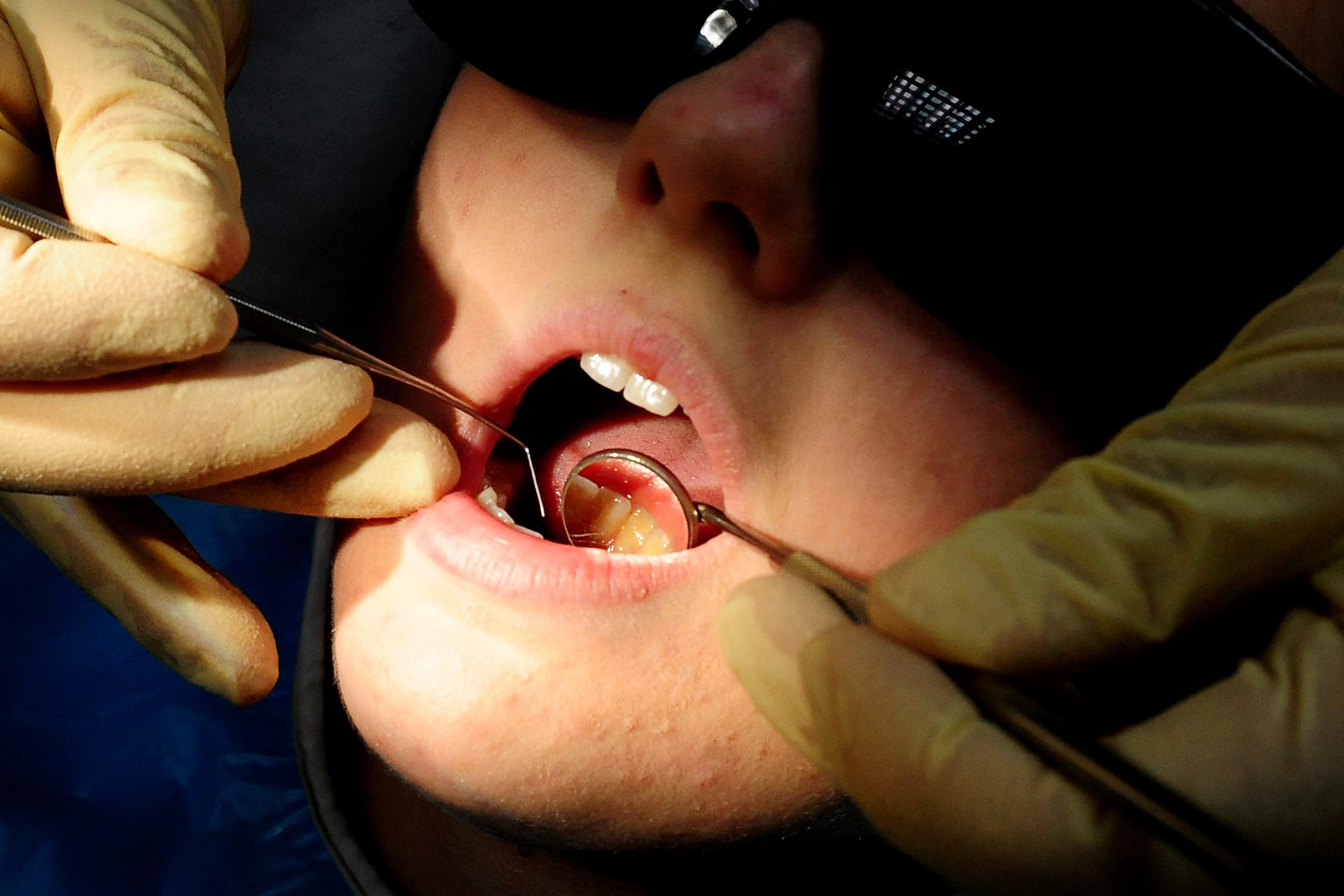More than 25,000 children had decaying teeth removed in hospital last year
Tooth decay is the most common reason for hospital admission in children aged six to 10.

Your support helps us to tell the story
From reproductive rights to climate change to Big Tech, The Independent is on the ground when the story is developing. Whether it's investigating the financials of Elon Musk's pro-Trump PAC or producing our latest documentary, 'The A Word', which shines a light on the American women fighting for reproductive rights, we know how important it is to parse out the facts from the messaging.
At such a critical moment in US history, we need reporters on the ground. Your donation allows us to keep sending journalists to speak to both sides of the story.
The Independent is trusted by Americans across the entire political spectrum. And unlike many other quality news outlets, we choose not to lock Americans out of our reporting and analysis with paywalls. We believe quality journalism should be available to everyone, paid for by those who can afford it.
Your support makes all the difference.More than 25,000 children had decaying teeth removed in hospital last year, figures suggest.
Data from the Government’s Office for Health Improvement & Disparities shows that 42,180 operations for tooth extraction took place in NHS hospitals in England in 2021/22 for youngsters aged 19 and under.
Of these, 26,741 had a main diagnosis of tooth decay, representing 63% of tooth extractions for the age group.
Tooth decay is the most common reason for hospital admission in children aged six to 10.
Overall, there was an 83% increase in extractions for tooth decay compared with 2020/21, though the report said “this increase is likely to reflect a partial recovery of hospital services following the Covid-19 pandemic”.
The data showed that children living in the most deprived communities are around 3.5 times more likely to have teeth out due to decay than those in the most affluent areas.
The highest rates occurred in Yorkshire and the Humber (378 per 100,000 population of children aged 19 and under) while the lowest rates were in the East Midlands (71 per 100,000).
The cost to the NHS of removing rotting teeth was estimated at £50.9 million in 2021 to 2022.
The report said that while the number of operations for tooth extraction in 2021/22 was higher than the previous year, levels were still lower than pre-pandemic figures.
The British Dental Association (BDA) said the data “understates the level of demand, given huge backlogs and only partial recovery of elective services”.
Tooth decay is still going unchallenged as the number one reason for hospital admissions among young children
It said it was “deeply concerned that ongoing and severe access problems, together with disruption to public health programmes and lockdown diets”, will widen inequalities.
It also pointed to issues in recruiting dentists and a Government “failure to deliver reform and investment”.
BDA chairman Eddie Crouch added: “Tooth decay is still going unchallenged as the number one reason for hospital admissions among young children.
“Decay and deprivation are going hand in hand, and this inequality is set to widen.
“None of this is inevitable. This Government needs to be willing to take off the gloves when it comes to fighting a wholly preventable disease.”
David Fothergill, chairman of the Local Government Association’s community wellbeing board, said: “Untreated dental conditions remain one of the most prevalent diseases affecting children and young people’s ability to speak, eat, play and socialise.
“Oral health inequality is expected to grow owing to the scale of backlogs in primary care, which limit the chance to catch problems early.
“The Government must use the upcoming spring Budget to recommit to vital measures to combat childhood obesity and diet-related ill health, such as the sugar levy which has helped cut down the consumption of drinks with high sugar content.”